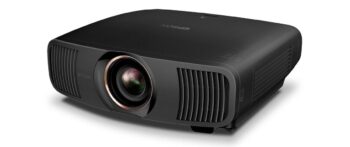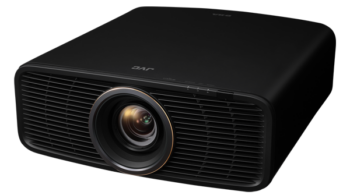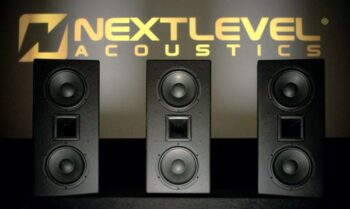

If you’re new to home theater or if you’re a seasoned pro, here’s a glossary of home theater terms for reference:
A
Access point
A wireless network transceiver often used to connect a local area network to one or more wireless devices.
Amplifier
A device for increasing the power of a signal.
Anamorphic widescreen
The process by which a comparatively wide widescreen image is horizontally compressed to fit into a storage medium with a narrower aspect ratio, reducing the horizontal resolution of the image while keeping its full original vertical resolution. Compatible play-back equipment can then expand the horizontal dimension to show the original widescreen image.
Artifact
A defect or distortion of a video image, introduced from origination and image capture to final display. Artifacts may arise from the overload of channel capacity by excess signal bandwidth. Artifacts may also result from: sampling effects in temporal, spatial, or frequency domains; processing by the transfer functions; compromises and inadequacies in the system employed; cascading of minor defects; basically any other departure of the total system from “complete transparency” resulting in visual errors.
Aspect Ratio
The ratio of width to height for the frame of the televised picture. 4:3 for standard systems and 16:9 for HDTV.
ATSC
An acronym for “Advanced Televisions System Committee”, the organization that defines the standard for high-definition TV in the United States.
Audyssey
An acoustical correction technology that calibrates a receiver so it can achieve optimum performance for every listener within a large listening area.
B
Bandwidth
The range of signal frequencies that a piece of audio or video equipment can encode or decode; the difference between the limiting frequencies of a continuous frequency band. Video uses higher frequency than audio, thus requires a wider bandwidth.
Bar Test Pattern (SMPTE)
Special test pattern for adjusting color TV receivers or color encoders. The upper portion consists of vertical bars of saturated colors and white. The power horizontal bars have black and white areas and I and Q signals.
Bass
The low audio frequency range typically below 500 Hz (hertz).
Bi-Amplification
The use of two amplifiers: one for the amplification of lower (bass) frequencies, and the other for higher (midrange and treble) frequencies.
Bit
Short for “Binary Digit”. The smallest piece of binary digital data and is represented by either 0 or 1.
Bit Depth
The number of levels that a pixel might have, such as 256 with an 8-bit depth or 1024 with a 10-bit depth.
Bit Rate
a) The rate at which the compressed bit stream is delivered from the storage medium to the input of a decoder. The digital equivalent of analog bandwidth.
b) The speed at which bits are transmitted, usually expressed in bit/s (sometimes abbreviated “bps”).
Blooming
This effect is sometimes called whiter-than-white. Blooming occurs when the white voltage level is exceeded and screen objects become fuzzy and large. The defocusing of regions of a picture where brightness is excessive.
Bottom End
Bass response.
Burned-In-Image
An image which persists in a fixed position on a monitor screen.
C
Candela
A unit for measuring luminous intensity. One candela is approximately equal to the amount of light energy generated by an ordinary candle.
Chroma
The quality of color that has both hue and saturation. White, black, and grays have no chroma.
Chromatic Aberration
An optical defect of a lens that causes different colors or wavelengths of light to be focused at different distances from the lens. It is seen as color fringes or halos along edges and around every point in the image.
Chromaticity
The color quality of light that is defined by the wavelength (hue) and saturation. Chromaticity defines all the qualities of color except its brightness.
Chrominance
A color term defining the hue and saturation of a color. Chrominance does not refer to brightness.
Client
An application on a computer or device connected to a network that requests services (files, print capability) from another connected computer or device on the network.
Clipping
Audible distortion that occurs when continuous power capabilities (headroom) are exceeded.
CODEC (Coding/Decoding)
a) The algorithm used to capture analog video or audio in digital form.
b) Used to implement the physical combination of the coding and decoding circuits.
c) A device for converting signals from analog to coded digital and then back again for use in digital transmission schemes. Most codecs employ proprietary coding algorithms for data compression.
Compression
a) The process of electronically processing a digital video picture to make it use less storage or to allow more video to be sent down a transmission channel.
b) The process of removing picture data to decrease the size of a video image.
c) The reduction in the volume of data from any given process so that more data can be stored in a smaller space. There are a variety of compression schemes that can be applied to data of which MPEG-1 and MPEG-2 are called lossy since the data produced by compression is not totally recoverable. There are other compression schemes that are totally recoverable, but the degree of compression is much more limited.
Convergence
In an analog projector, the alignment of red, green and blue images to form a single picture.
In a digital projector, the alignment of red, green, and blue imaging panels to form a single picture.
Crossover
In a loudspeaker, an electrical circuit used to divide the audio frequency spectrum (20 Hz – 20 kHz). The divided audio spectrum is then sent to the individual drivers.
D
DAC
Digital to analog converter – a component or circuit that is used to derive or convert an analog signal from a digital one.
Decibel (dB)
The basic unit of measurement in electronic and acoustic work – a logarithmic scale to express the difference between two values (the ratio of loudness) – the threshold of hearing is 0 dB. One dB SPL is the smallest audible difference in sound level.
Definition
The fine details available on-screen. The higher the definition of an image, the greater the number of details [that can be discerned by the human eye or displayed].
DHCP
Dynamic Host Configuration Protocol: software that enables a server to dynamically assign IP addresses from a predefined list and limit their time of use so they can be reassigned. With DHCP, whenever a client connects to the network, it automatically gets an IP address assigned to it.
DNS
Domain Name System: a program that translates domain names to IP addresses by accessing a database maintained on a collection of Internet servers. The program works behind the scenes to facilitate surfing the Web with alpha versus numeric addresses. A DNS server converts a name like mywebsite.com to a series of numbers like 107.22.55.26. Every Web site has its own specific IP address on the Internet.
Dolby Atmos
A surround sound technology developed by Dolby Laboratories. It expands on existing surround sound systems by adding height channels, allowing sounds to be interpreted as three-dimensional objects.
Dolby Digital
A five-channel surround system consisting of discrete left, center, right and left rear, right rear channels.
Domain name
The portion of a URL or Web address that identifies a specific Web site. For example, the domain name portion of the URL http:// avscience.com is avscience.com.
Driver
The part of a loudspeaker that vibrates to generate sound.
DSL
Digital Subscriber Lines: various technology protocols for high-speed data, voice and video transmission over ordinary twisted-pair copper POTS (Plain Old Telephone Service) telephone wires.
DTS
Digital Theater Systems. A surround sound format that competes with Dolby Digital. DTS supports bit rates up to 1,534 kbit/s, sampling rates up to 48.0 kHz and bit depths up to 24 bits.
DTS:X
An immersive surround format that uses overhead speakers along with traditional surround speakers.
DVD
An acronym for “Digital Versatile Disk”. It is the same size as a compact disc (CD). A single-layer DVD has a storage capacity of 4.7 GB and a dual-layer disc has a capacity of 8.5 GB.
DVD-A
DVD-Audio is a digital format for delivering high-fidelity audio content on a DVD. DVD-A is capable of frequencies from 0 to 96 kHz with a maximum dynamic range of 144 dB.
Dynamic IP address
An IP address assigned to a client, each time the client connects to the network. The dynamic IP address is configured by the DHCP server and can be different each time the client connects to the network.
Dynamic Range
The difference between the softest and loudest portions of sound within an acceptable range of distortion.
E
Efficiency
Also known as speaker sensitivity, a measure of a speaker’s decibel output at a specified amount of amplifier power.
Encryption key
A password that enables data to be encrypted then decrypted so it can be safely shared among members of a network. WEP uses an encryption key that automatically encrypts outgoing wireless data. On the receiving side, the same encryption key enables the computer to automatically decrypt the information so it can be read.
F
FLAC
Free Lossless Audio Codec is a codec (compressor-decompressor) which allows digital audio to be losslessly compressed such that file size is reduced without any information being lost.
Footlambert (FL)
A unit of luminance equal to 1 / Π candela per square foot or to the uniform luminance at a perfectly diffusing surface emitting or reflecting light at the rate of one lumen per square foot. A lumen per square foot is a unit of incident light and a footlambert is a unit of emitted or reflected light. For a perfectly reflecting and perfectly diffusing surface, the number of lumens per square foot is equal to the number of footlamberts.
Frequency Response
The lowest and highest parts of the frequency spectrum that can be reproduced by an audio component within specific limits and tolerances.
G
Gamma
The degree of contrast in a video picture.
Gauge
The diameter of a wire. The higher the number, the thinner the wire.
Graphic equalizer
Refers to a type of equalizer with sliding controls that create a pattern representing a graph of frequency response changes.
H
Haas Effect
The psychoacoustic effect that allows us to perceive direction. If a sound reaches both ears simultaneously and at the same loudness, the sound appears to be coming from directly in front of or behind the listener.
Hertz (Hz)
The unit of measurement for frequency. 1 Hz is equal to 1 cycle per second.
Hotspot
A hotspot is a location that provides wireless broadband Internet service to mobile visitors. Hotspots can be found in places such as airports, libraries, coffee shops, and hotels.
I
Imaging
The reproduction of sound accurately so that the listener can imagine the original environment and placement of the original sound sources accurately within within that environment.
Impedance
The resistance a speaker offers to the current supplied by an amplifier.
IP
Internet Protocol: technology that supports voice, data and video transmission via IP-based local area networks, wide area networks, and the Internet. This includes VoIP (Voice over IP).
IP address
A number that identifies each sender or receiver of information that is sent across the Internet.
ISP
Internet service provider
L
LAN
Local area network.
LCR (Left, Center, Right)
The front three speakers in a surround system.
Letterbox
A method of displaying widescreen video on a screen with a different aspect ratio by leaving black bars, above and below the image.
Oversampling – Doubling or quadrupling (or by even a higher factor of 2 squared) the sampling frequency during the digital to analog process to obtain a high frequency for digital filtering.
M
MLP
Meridian Lossless Packing, also known as Packed PCM (PPCM), is a proprietary lossless compression technique for compressing PCM audio data developed by Meridian Audio, Ltd. MLP is the standard lossless compression method for DVD-Audio content (often advertised with the Advanced Resolution logo) and typically provides about 1.5:1 compression on most music material. All DVD-Audio players are equipped with MLP decoding, while its use on the discs themselves is at their producers’ discretion. To store 5.1 tracks in 88.2 kHz / 20-bit, 88.2 kHz / 24-bit, 96 kHz / 20-bit or 96 kHz / 24-bit on a DVD disc, the use of MLP compression is mandatory.
Motion Picture Expert Group (MPEG)
A group of standards for encoding and compressing audiovisual information such as movies, video, and music.
MP3
MPEG-1 or MPEG-2 Audio Layer III is an encoding format for digital audio which uses a form of lossy data compression.
N
National Television Standards Committee (NTSC)
A committee that worked with the FCC in formulating standards for the present day United States color television system.
Network name
Identifies the wireless network for all the shared components. During the installation process for most wireless networks, you need to enter the network name or SSID. Different network names are used when setting up your individual computer, wired local area network, or workgroup.
P
Passive Radiator
A diaphragm or cone that looks similar to a woofer that reinforces the woofer’s bass output. They are acoustically similar to a port.
PCM
Pulse-code modulation is a method used to digitally represent sampled analog signals. It is the standard method of storing audio in computers and various Blu-ray, DVD and Compact Disc formats. PCM supports bit rates up to 1,534 kbit/s, sampling rates up to 48.0 kHz, and bit depths up to 24 bits.
Pixel
Short for Picture Element. The most basic unit of an image displayed on a computer or video display screen. Pixels are generally arranged in rows and columns; a given combination among the pixels of various brightness and color values forms an image.
R
Resolution
The amount of resolvable detail in a picture.
Router
An access point or hub that sends data from one local area network (LAN) or wide area network (WAN) to another. A router monitors and controls data flow and sends information using the most efficient route based on traffic load, line costs, speed, bad connections, etc.
S
SACD
Super Audio CD is a format capable of delivering a dynamic range of 120 dB from 20 to 20 kHz and an extended frequency response up to 100 kHz.
Sampling rate
Sampling rate or sampling frequency is the number of samples per unit of time (usually seconds) taken from a continuous signal to make a discrete signal. Common examples of sampling rates include CD quality audio, which is recorded at 44.1 kHz, SACD which is recorded at 2.8224 MHz and DVD-Audio, which can support 96 kHz and higher.
SMPTE (Society of Motion Picture and Television Engineers)
A global organization, based in the United States, which, among other things, sets standards for baseband visual communications. This includes film as well as video standards.
Sound Pressure Level (SPL)
An acoustic measurement of sound energy, typically expressed in dB SPL. Theoretically, 0 dB SPL is the threshold of human hearing at 1 kHz, while 120 dB is the threshold of pain.
Sound Stage
The area that appears to be occupied by sonic images. as with a real stage, a sound stage should have depth, height, and width.
SSID
Service Set Identifier: also referred to as a network name, since it is essentially a name that identifies a wireless network.
SSL
Secure Sockets Layer: a commonly used encryption scheme used to protect the integrity of transactions.
T
Test Pattern
A chart especially prepared for checking overall performance of a television system. It contains various combinations of lines and geometric shapes.
TCP/IP
The underlying technology behind the Internet and communications between computers in a network.
THX
A set of technical standards and performance criteria developed by Lucasfilm to ensure that moviegoers see and hear a film at optimum performance levels, “as the director intended”. This comprehensive set of standards includes rigorous specifications designed to optimize equipment, room acoustics, background noise levels, and projection and viewing angles.
Tweeter
A loudspeaker driver that reproduces the higher range of the audio spectrum (treble).
U
URL
Uniform Resource Locator: also referred to as a Web address, since it identifies the location of a file or resource on the Web. For example, the domain name portion of the URL http://www. avscience.com is avscience.com.
W
WAN
Wide area network
WAV (Waveform Audio File Format)
A Microsoft and IBM audio file format standard for storing an audio bitstream on PCs.
WEP
Wired Equivalent Privacy: basic wireless security provided by Wi-Fi.
WEP key
A text string used for WEP security on a Wi-Fi wireless network.
Woofer
A loudspeaker driver that reproduces the lower range of the audio spectrum (bass).
WPA
Wi-Fi Protected Access: a Wi-Fi security standard that provides a high level of wireless network security. It uses data encryption through the Temporal Key Integrity Protocol (TKIP). TKIP scrambles the keys and ensures that the keys haven’t been tampered with. User authentication is performed through the Extensible Authentication Protocol (EAP), to ensure that only authorized network users can access the network.
Wi-Fi
Wireless Fidelity: a term developed by the Wi-Fi Alliance commonly used to describe any type of 802.11 standard wireless network. Products tested and approved as “Wi-Fi Certified” (a registered trademark) by the Wi-Fi Alliance are certified as interoperable with each other, even if they are from different manufacturers.
Z
Zone
The Zone feature on a home theater receiver sends a second signal to speakers or separate audio system in another room.


